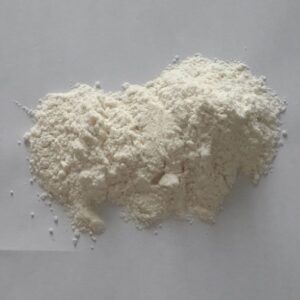Diarylethylamine
Diarylethylamine: Everything You Need to Know
Diarylethylamine, a term gaining recognition in scientific and pharmacological communities, refers to a class of organic compounds characterized by two aryl (aromatic) groups attached to an ethylamine backbone. This article delves into the structure, applications, and significance of diarylethylamines while addressing frequently asked questions about this fascinating chemical class.
What Are Diarylethylamines?
Diarylethylamines are compounds in which two aromatic rings (aryl groups) are bonded to an ethylamine chain. Their structural formula can be generalized as:
R-Ar-CH2-CH2-Ar-NH2
-
R: Represents substituents that may vary between compounds.
-
Ar: Aryl groups (aromatic rings).
This structural flexibility allows diarylethylamines to be tailored for specific applications in various fields, including medicinal chemistry, materials science, and organic synthesis.
Applications of Diarylethylamines
-
Pharmaceuticals: Diarylethylamines play a pivotal role in drug development. They serve as precursors or active ingredients in medications targeting neurological disorders, inflammation, and even cancer.
-
Example: Some derivatives exhibit antidepressant or anxiolytic properties.
-
-
Organic Synthesis: These compounds are intermediates in synthesizing complex molecules. Their dual aromatic rings contribute to their reactivity and utility in creating diverse chemical architectures.
-
Materials Science: Diarylethylamines are used in the development of advanced polymers, liquid crystals, and dyes. Their electronic properties make them valuable in optoelectronic devices.
Key Features of Diarylethylamines
-
High Versatility: The presence of two aryl groups makes diarylethylamines highly adaptable for chemical modification.
-
Pharmacological Potential: These compounds have shown promise in binding to biological targets, influencing their therapeutic potential.
-
Synthetic Accessibility: Diarylethylamines are synthesized using straightforward methods such as reductive amination or coupling reactions.
How Are Diarylethylamines Synthesized?
The synthesis of diarylethylamines typically involves:
-
Reductive Amination: Combining an aryl ketone with ethylamine under reducing conditions.
-
Cross-Coupling Reactions: Utilizing catalysts like palladium or nickel to attach aryl groups to an ethylamine backbone.
Potential Challenges
-
Stability: The stability of diarylethylamines can vary depending on the substituents and environmental conditions.
-
Toxicity: Some diarylethylamines may pose risks if improperly handled, necessitating stringent safety protocols in their use and disposal.
-
Regulatory Considerations: Due to their potential use in pharmaceutical and chemical industries, these compounds may be subject to regulatory scrutiny.
FAQs about Diarylethylamines
1. Are diarylethylamines natural or synthetic?
Diarylethylamines are primarily synthetic, designed in laboratories for specific applications.
2. Can diarylethylamines be used in drug development?
Yes, their structural features make them promising candidates in pharmacological research, particularly in developing treatments for neurological and inflammatory conditions.
3. Are diarylethylamines environmentally friendly?
The environmental impact of diarylethylamines depends on their synthesis and degradation pathways. Sustainable practices in manufacturing can mitigate potential harm.
The Future of Diarylethylamines
With ongoing advancements in organic chemistry and materials science, diarylethylamines hold significant potential for innovation. Future research may uncover new applications in areas such as nanotechnology, sustainable chemistry, and precision medicine.
Conclusion
Diarylethylamines represent a versatile and dynamic class of compounds with applications across pharmaceuticals, materials science, and beyond. Their adaptability and potential for innovation make them a focal point for scientific exploration. Whether you’re a chemist, a researcher, or simply curious, understanding diarylethylamines opens doors to a fascinating realm of organic chemistry.
Showing all 2 results


